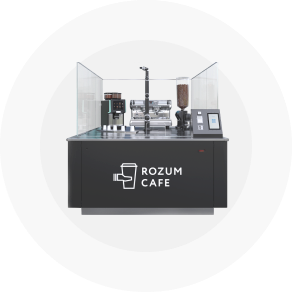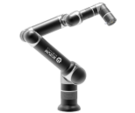As well as any other, absolute encoder delivers crucial data concerning the positioning and the speed of a particular device. For the purpose, it counts the number of pulses per one or multiple shaft turns. The electro-mechanical devices convert the mechanical motion of a shaft or axle to analog or digital output signals and transmit the signals to a controller (or another available control device).
In this way, the encoders enable tracking of the precise position, rate, direction or speed of a known motor. Although the way in which the device determines the movement can vary, a person can choose from a number of encoders that operate differently and have different methods of implementation.
Incremental vs absolute
Based on the type of output, encoders can be either absolute or incremental.
Devices of the incremental type report changes of the motor position without providing any feedback on where exactly the motor has moved. Absolute ones indicate both the change of the motor position and the exact location at the moment of the inquiry.
The output of an incremental device is a continuous series of pulses — phase-shifted square-wave signals. All measurements are referenced to a start point. To determine the state of the motor, one has to know where the point is and count the increments (pulses). The output of the absolute encoder is an elaborate signal in digital bits, where each bit corresponds to a known position.
Rozum absolute encoder advantages
-
High resolution accompanied with high level of orientation
-
Faster and better recovery in case of system or power failures
-
Options are optical or magnetic measuring principle
-
Single or multi-turn options
-
Determines the exact position of the object and takes control over available electronic data
-
Continuous non-stop position monitoring
-
Precise motion detection along multiple axes
Where can it be used?
Such an encoder doesn’t rely on additional devices and processes the positioning information itself. So, it can be used for applications when besides the absolute encoder other external components are unavailable or absent.
Let’s consider some of the examples of how absolute encoders are used in real life:
-
Can determine multi-axis orientation for CNC machines in parts manufacturing
-
High precision positioning of multiple stabilizers for any large vehicles such as cranes or aerial lifts
-
Positions multiple stabilizers in satellites
-
Accurately determining the necessary height of scissor beds, commonly used in hospitals
-
Enabling the movement of automatic doors with no limitation switches
-
Ensuring efficient work of a robotic machine, continuing the movement smoothly even after it has been afflicted and undergone power failure
-
Can be used in pedestals, gimbals and more.
Thus, with their obvious superiority in positioning accuracy that affects the overall application performance, encoders can be used in any automated industry.
Precise positioning of RDrive servo motors
It is perfect if the accuracy of speed and positioning are in favor over the simplicity of the system itself. Rozum Robotics has created a closed-loop motion control system with two encoders integrated into the RDrive servo motors. In this system, a controller sends a command to a motor and receives a feedback signal with position and speed data from the devices.
We choose absolute
The RDrive servo motors use encoders of the absolute type. Such devices are resilient against power outages and signal interruptions because they require no referencing to a start point. You can read the exact motor state immediately upon powering on. You will also find that the information on the whereabouts of the absolute encoder is retained regardless if the power is on or off - proves to be of enormous help!
Why magnetic are better?
The magnetic sensing technology is just one of the many available options for measuring. Based on the preferences and requirements, encoders can also make measurements using optical, mechanical, inductive, or conductive sensing methods.
Magnetic include the following basic components: a disk with strips of magnetized material, sensors, conditioning circuit. The sensors can monitor changes in voltage (Hall-effect devices), or in the magnetic field (magnetoresistive devices), and convert the resulting data to a sine wave. The conditioning circuit processes the sensor signals to produce an output in the required form.
For Rozum Robotics, absolute magnetic encoders have a number of obvious advantages:
-
The devices can function in dirty/dusty environments and when exposed to other non-ferromagnetic contaminants
-
The allowable air gap is up to 4mm
-
They are resistant to heat, humidity, shock, and vibration
-
They are compact, low-cost, and robust (require no casing for heavy-duty applications)
-
There are no moving parts
-
The devices can be adapted to fit a specific application
How it helps with RDrive motion control
The motion control system of RDrive servo motors is of the closed-loop type: it not only receives motion control commands from a control device, but also provides feedback on their execution. The system consists of a self-designed controller and two absolute encoders.
The operation of the motion control system involves the following interactions:
-
The controller receives a control command from a control device (e.g., a PC or a CAN master) and applies current to the frameless AC motor to produce motion with required parameters.
-
The two absolute encoders monitor the absolute positions of the rotor and output shaft and send feedback to the controller.
-
The controller processes the feedback and compares the resulting values with the control command. If needed, it also adjusts the motor positioning and other parameters.
-
The controller receives and processes feedback signals from the NTC thermistor in the motor winding.
-
When the value based on the thermistor reading exceeds the maximum temperature limit, the controller cuts the servo off.
Motion feedback
RDrive servo motors comprise two integrated feedback devices—absolute magnetic encoders. They are mounted on a separate PCB that is connected with the controller PCB by means of a flat cable (a BiSS line). One of the devices delivers information about the absolute positioning of the output shaft and the other—about that of the rotor.
Encoder data
Motion control implementation
You can implement motion control of RDrive servo motors in either of the two ways: based on CANOpen communication or via Application Programming Interface (API). Our product is a guarantee of reliable feedback without referencing.
RDrive are absolute and magnetic!
The absolute encoders integrated into the RDrive servo motors can boast an accuracy of 19 bits, they are a part of all of our motors: RDrive 50 (53 mm diameter, 85 mm length), RDrive 60 (63 mm diameter, 89 mm length), RDrive 70 (73 mm diameter, 105 mm length), RDrive 85 (88 mm diameter, 112 mm length), RDrive 110 (115 mm diameter, 150 mm diameter). One of the devices monitors the angular motion and speed of the output shaft. The other provides feedback on the angular positioning and speed of the rotor shaft.
The built-in absolute magnetic encoders enable taking accurate positioning and speed measurements even in heavy-duty industrial applications. They are immune to temperature and humidity fluctuations, shock, vibration, and contaminants that are not ferromagnetic. In addition, the feedback from the devices is available immediately upon powering up, even after an outage.














